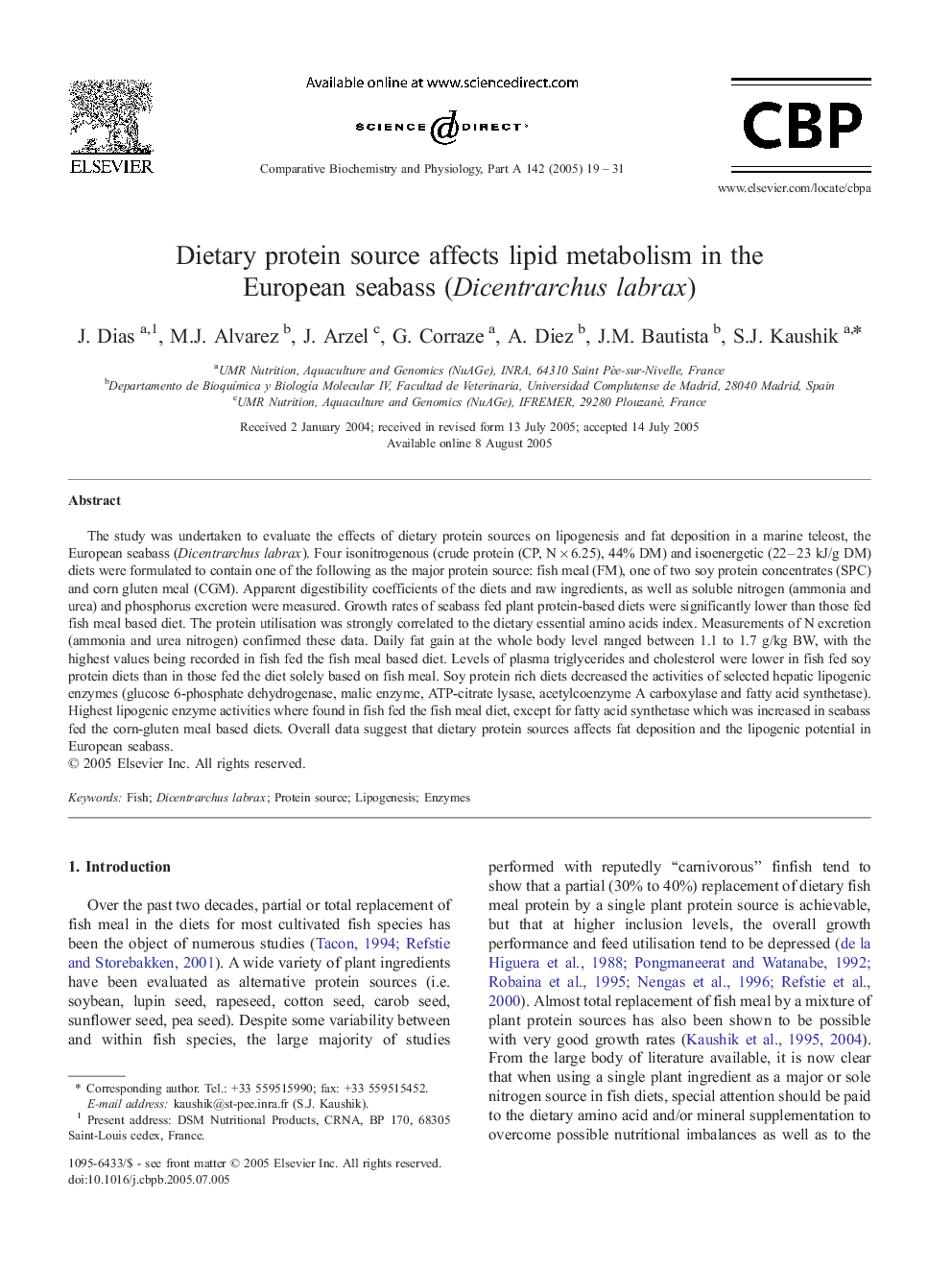| Article ID | Journal | Published Year | Pages | File Type |
|---|---|---|---|---|
| 10819062 | Comparative Biochemistry and Physiology Part A: Molecular & Integrative Physiology | 2005 | 13 Pages |
Abstract
The study was undertaken to evaluate the effects of dietary protein sources on lipogenesis and fat deposition in a marine teleost, the European seabass (Dicentrarchus labrax). Four isonitrogenous (crude protein (CP, NÂ ÃÂ 6.25), 44% DM) and isoenergetic (22-23 kJ/g DM) diets were formulated to contain one of the following as the major protein source: fish meal (FM), one of two soy protein concentrates (SPC) and corn gluten meal (CGM). Apparent digestibility coefficients of the diets and raw ingredients, as well as soluble nitrogen (ammonia and urea) and phosphorus excretion were measured. Growth rates of seabass fed plant protein-based diets were significantly lower than those fed fish meal based diet. The protein utilisation was strongly correlated to the dietary essential amino acids index. Measurements of N excretion (ammonia and urea nitrogen) confirmed these data. Daily fat gain at the whole body level ranged between 1.1 to 1.7 g/kg BW, with the highest values being recorded in fish fed the fish meal based diet. Levels of plasma triglycerides and cholesterol were lower in fish fed soy protein diets than in those fed the diet solely based on fish meal. Soy protein rich diets decreased the activities of selected hepatic lipogenic enzymes (glucose 6-phosphate dehydrogenase, malic enzyme, ATP-citrate lysase, acetylcoenzyme A carboxylase and fatty acid synthetase). Highest lipogenic enzyme activities where found in fish fed the fish meal diet, except for fatty acid synthetase which was increased in seabass fed the corn-gluten meal based diets. Overall data suggest that dietary protein sources affects fat deposition and the lipogenic potential in European seabass.
Related Topics
Life Sciences
Biochemistry, Genetics and Molecular Biology
Biochemistry
Authors
J. Dias, M.J. Alvarez, J. Arzel, G. Corraze, A. Diez, J.M. Bautista, S.J. Kaushik,
